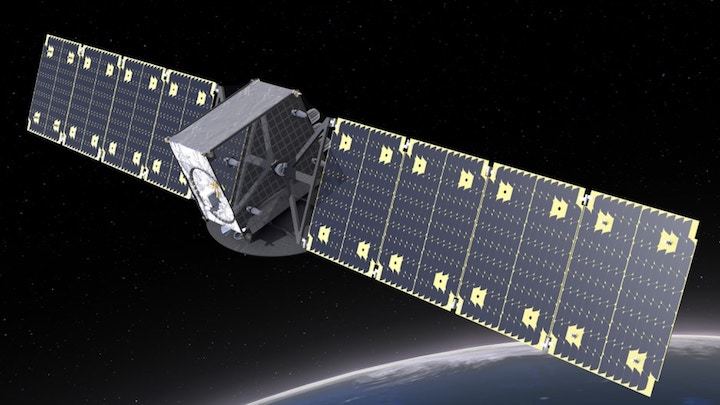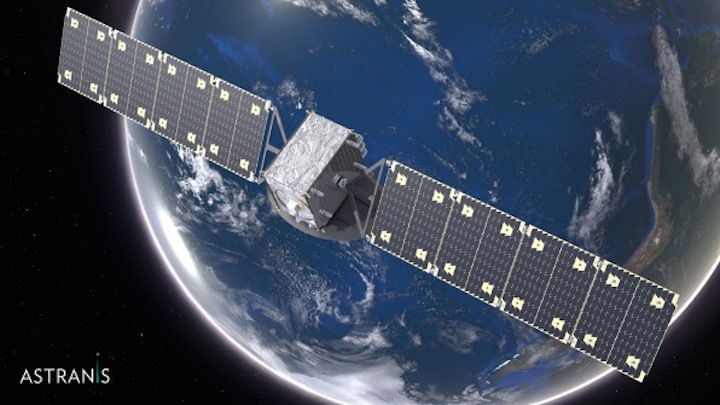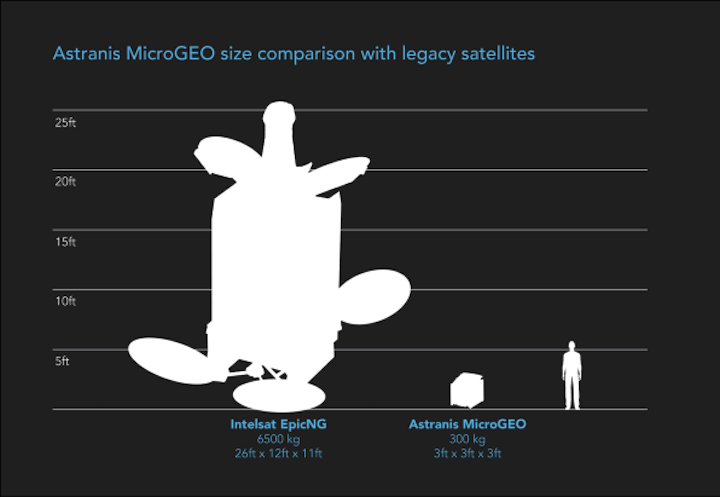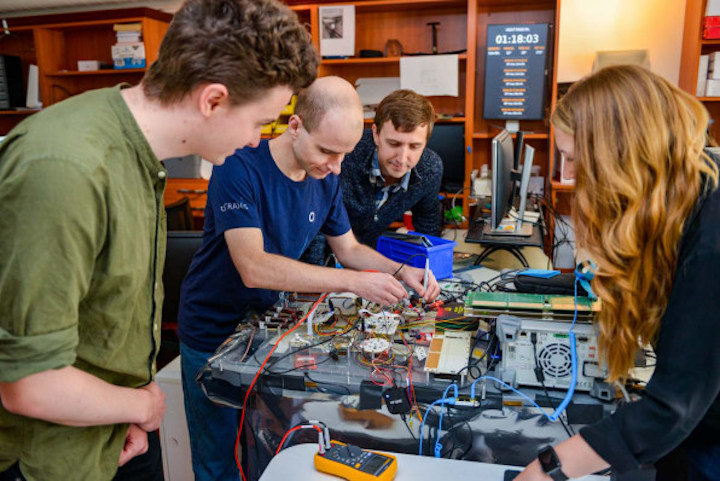3.03.2018
Andreessen Horowitz-funded Astranis says it will have small satellites capable of serving whole countries in geostationary orbit by next year.

When the folks at Astranis, a startup coming out of stealth today to bring broadband internet connectivity to uncovered areas of the world, attempted their initial communications last month with the first satellite they’d launched into space, there was no response.
They’d constructed a ground station in Fairbanks, Alaska, for communicating with their small geostationary satellites, but they couldn’t reach the one that at that moment was rotating the Earth at roughly a thousand miles an hour. “It was this mystery,” recalls John Gedmark, Astranis’s CEO.
It wasn’t competitors trying to sabotage them, or faulty manufacturing or software. It wasn’t a problem with the satellite. It was because the transmitter atop the college radio station at the nearby school was inadvertently jamming the startup’s communications. A phone call or two later, they worked out a solution, and it was game on for Astranis’s first test of its new satellite. But the episode illustrated one thing, Gedmark says: “This stuff is hard.”
There are 4 billion people on Earth without access to broadband internet, and the market for new broadband coverage in such areas is growing 30% a year. That’s why everyone from Facebook to Alphabet to SpaceX, and many others, are trying to come up with myriad ways to get connectivity to people with none at all, or at least no broadband.
With $18 million in funding from Andreessen Horowitz in hand, Astranis is pursuing an approach it believes has never been tried before: inexpensive, small geostationary satellites that can each have 10 gigabytes per second of capacity for covering an area the size of a small- or even mid-sized country.

Although Gedmark, previously the cofounder and executive director of the Commercial Spaceflight Federation, certainly hopes his company can help bring broadband to people in the third world who will benefit from it, he’s motivated in part by his own upbringing in Kentucky, one of the least broadband-penetrated states in America. “People want to think about 4 billion people not online in the developing world,” he says, “but it’s actually [still] a problem here in the richest country in the world.”
Thanks to the building out of a global infrastructure that now makes it easy and relatively inexpensive to put small satellites—that are on the order of about 660 pounds–into space, as well as frequent cargo launches by companies like SpaceX, as well as Astranis’s own use of software-defined radio technology, the company is hopeful it can make an impact starting with its first commercial launch sometime in 2019.

Although Astranis sees the value of traditional, low-Earth orbit internet-connectivity satellites, Gedmark says they are economically risky, in part because they’re the size of double-decker buses and incredibly fragile and sensitive. The testing process alone is expensive and time-consuming and can result in scrapping satellites if they are damaged during lift-in or lift-out of their huge testing chambers.
Further, he says, because those satellites can only stay in contact with an area for a few minutes as they traverse the Earth in low-Earth orbit, companies like SpaceX plan on putting “constellations” of as many as 1,100 of them into space in order to blanket the planet in coverage. But by putting its satellites into geostationary orbit, where they stay in lock-step with the Earth’s rotation, a single satellite can provide coverage 24/7/365, Gedmark argues.
Further, thanks to Astranis’s software-defined radio systems, all the signal processing is digital, and the satellites can be issued over-the-air software updates at any time. Plus, because they’re small, they can be mass produced on an assembly line.
Astranis’s customers will be telecommunications companies and wireless carriers that have no problems putting up cell towers in remote areas, but haven’t had economical ways to get connectivity to them. The company plans on contracting with those telcos to provide the satellite-based connectivity to anyone who wants it. The more customers it has, the more satellites it will build, and put into the skies 22,000 miles above us.
And because its satellites are small, Gedmark says Astranis will be able to easily find space on any of the many rockets being launched these days, by SpaceX and others.

“We love the space,” Casado says, laughing. “We love the disruption that’s happening with satellites. It feels like mainframes and PCs all over again. There are massive decreases in costs, and a massive increase in flexibility.”
He notes that the size of the global cellular broadband market is “enormous” at $120 billion, and said Andreessen Horowitz liked that Astranis seemed ready to begin making an impact in the area within a couple years.
Further, Casado says that when the firm was evaluating potential space companies, he heard from multiple people that Gedmark was the person most responsible for the privatization of space during the Obama Administration.
For his part, Casado has been trying to solve the problem of bringing broadband internet to rural areas for years, via a nonprofit that’s been building cell towers near indigenous communities of the United States for several years. He learned during that work that the hardest problem to solve is the backhaul–how to get the cell towers connected to the internet: Exactly the problem Astranis is trying to solve.
And that’s why he recognized the San Francisco startup’s value. “If you ask the very simple question, What is the primary problem standing in the way of a billion people getting online, I wouldn’t have appreciated how much of that is backhaul.”
